20 banned album sleeves: when rock falls foul of the censors
Rock’s often deliberately provocative cover art can lead to outrage. Here are 20 main offenders in our gallery of banned record sleeves
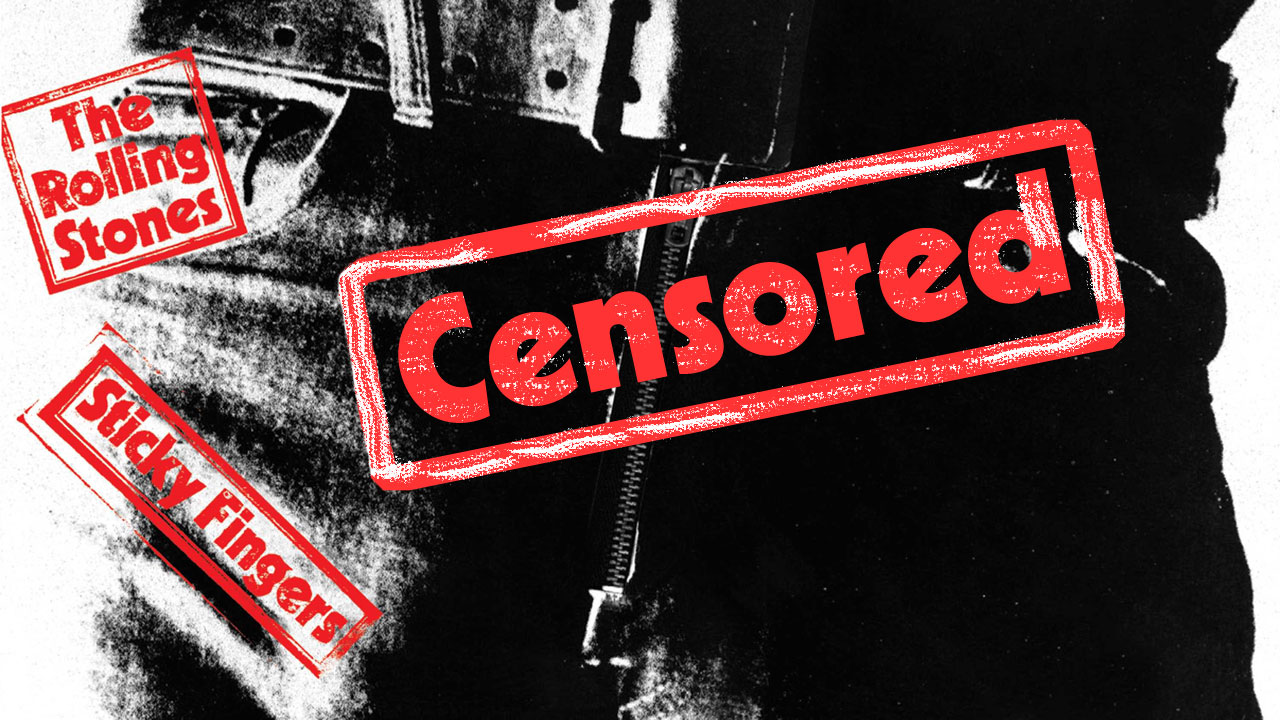
As so often, The Beatles led the way. Barely a month before Lennon’s “bigger than Jesus” comments got their records burned in America, The Beatles almost pole-axed their “lovable Moptops” image with the sleeve for a US-only album, Yesterday… And Today.
Satirising their US label’s latest mincing of their UK records into an extra LP, the Fabs kitted themselves up as butchers for the cover, chopping up dolls with gleeful grins.
The Beatles as a premonition of Alice Cooper was all too much, and quickly recalled copies had an innocuous publicity pic glued over the grisly bloodbath.
Two years later, when the intended cover for Jimi Hendrix’s Electric Ladyland wasn’t ready in time, the title was taken literally and Soho strippers were corralled from their lunchtime trade to nakedly adorn the gatefold sleeve.
Two York record shops banned it, and the Gramophone Retailers’ Committee protested, secretary Christopher Foss telling the Sunday Mirror: “This type of album sleeve is almost certain to reduce the sale of records.” Actually, the paper reported, Electric Ladyland sold 35,000 in its first four days. The US still went with an alternative shot of Hendrix’s fiery face.
Ever since, controversial cover art has annoyed the grown ups and assisted sales, from Blind Faith to Bon Jovi, from Roxy Music to Roger Waters.
Our gallery presents some of rock’s most famous banned sleeves… and their eventual replacements.
Sign up below to get the latest from Classic Rock, plus exclusive special offers, direct to your inbox!

Bon Jovi - Slippery When Wet

Bon Jovi's third album Slippery When Wet was originally adorned by a beach babe wearing a wet T-shirt. Someone at the record company balked, and the replacement, simply written in rain, probably helped Bon Jovi’s family-friendly future (though minus that image, the title sounds more obscene). "They thought it would be banned by American stores," says Richie Sambora. "So we had to come up with something else – fast."
The Rolling Stones - Beggars Banquet
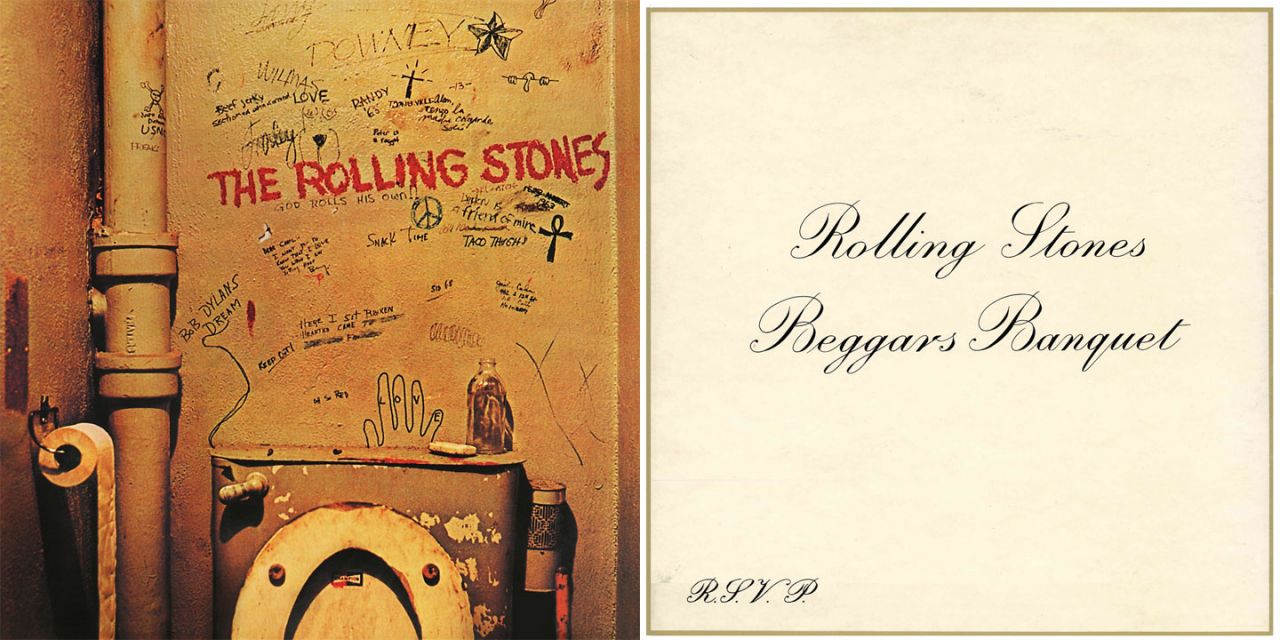
Back in 1968, any picture of a public toilet was seen as unspeakably vulgar by some, so it's little surprise that arguments over the sleeve art delayed the release of The Rolling Stones' Beggars Banquet's by months. Subsequently re-packaged with the much safer "RSVP "design, the toilet has resurfaced on more recent reissues.
The Rolling Stones - Sticky Fingers
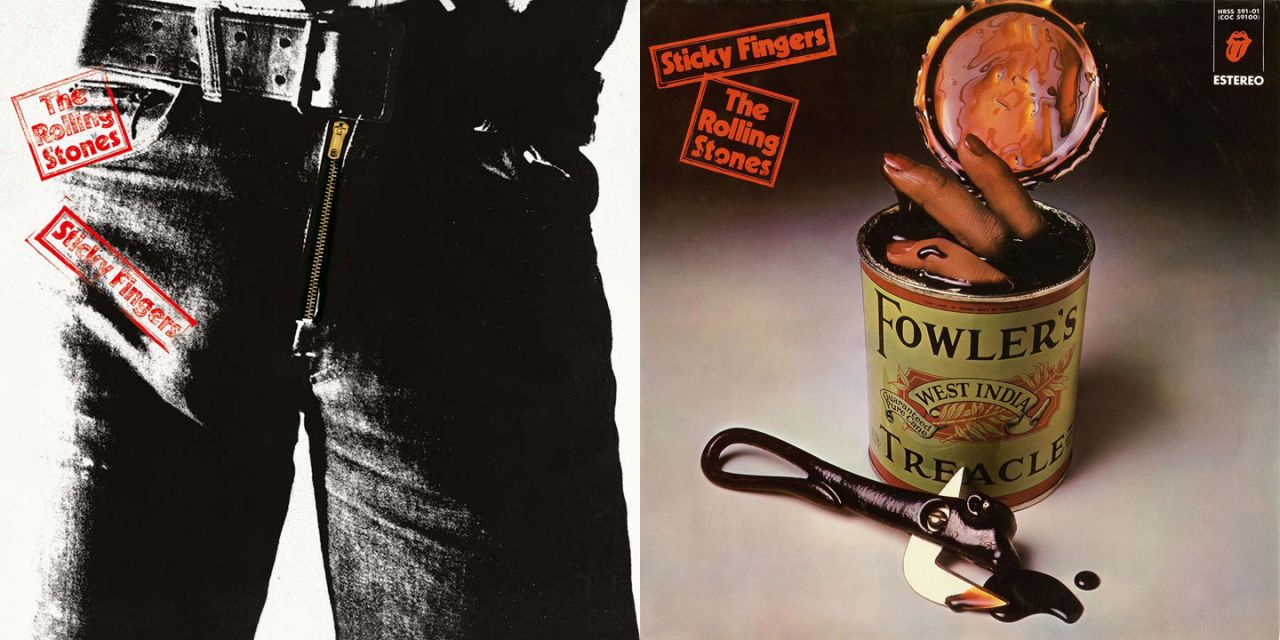
If anything's likely to get people in a tizzy it's a close-up of a male crotch, and the one on the cover of Sticky Fingers was no exception. Andy Warhol's famous photo – thought by most to picture model Joe Dellesandro – was banned in Franco's Spain, where it was replaced by the infamous "Can of fingers" cover.
Poison - Open Up and Say... Ahh!
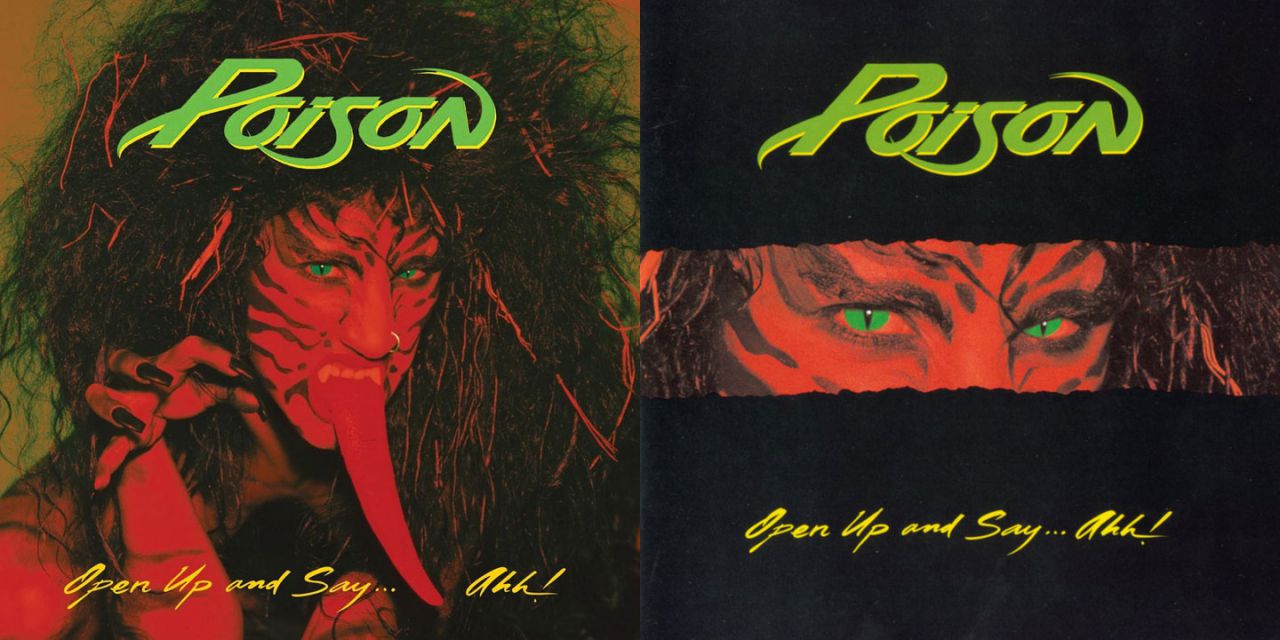
Hair metal was mainstream by the mid-1980s, when Tipper Gore’s prudish and pig-ignorant Parents Musical Resource Center (PMRC) pressured the major labels into defacing CDs with “PARENTAL ADVISORY” stickers.
It was the content that was feared: Missouri Representative Jean Dixon declared rock rebellion was “like witchcraft”. But covers still got it in the neck, too - like the long-tongued demon on Poison’s Open Up And Say…Ahh!, which had to be covered so all you could see was its evil eyes - all the better, surely, to mesmerise impressionable rock fans into Satan’s ways.
Guns N' Roses – Appetite For Destruction

Underground cartoonist Robert Williams’ art for Guns N’ Roses’ Appetite for Destruction in 1987, swiftly nixed by Geffen, showed a raped woman prostrate with clothes ripped in an alley, while the demon that did it leered overhead.
Replaced by the familiar Guns N' Roses crucifix, the album's notoriety was unaffected. It was around this time, as CDs replaced LPs and sleeves’ importance diminished, that censors’ distrust of rock and rap reached its peak.
Roger Waters - The Pros And Cons Of Hitchhiking
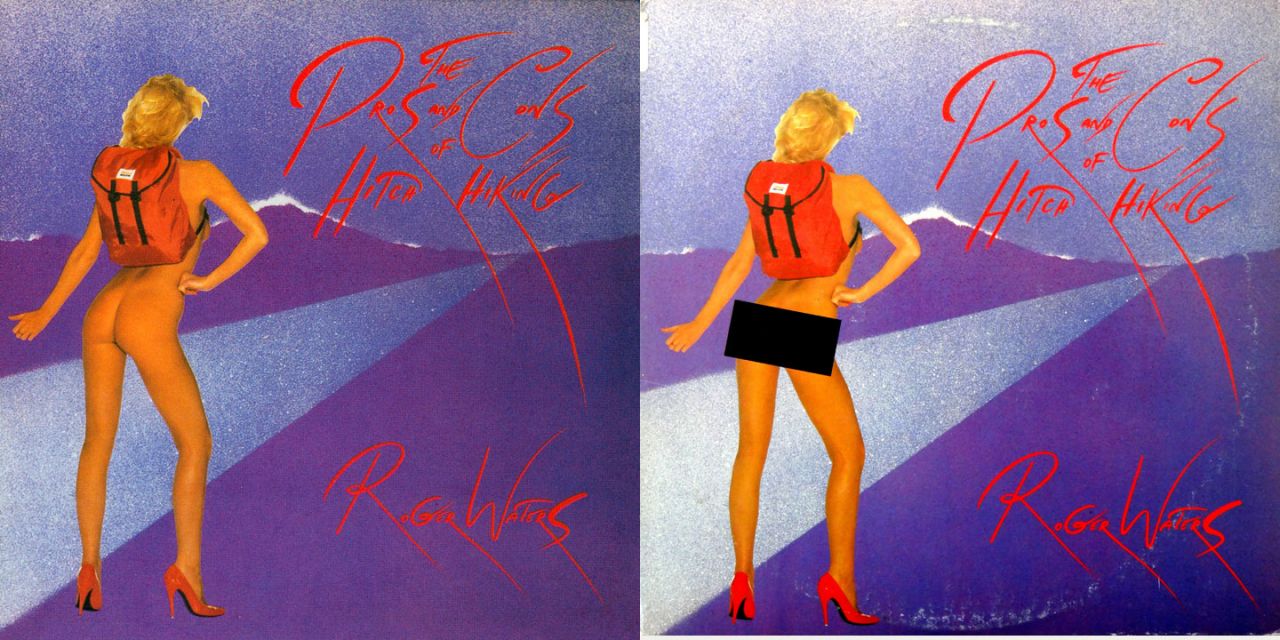
The naked backpacker on Roger Waters’ solo debut The Pros and Cons of Hitchhiking (1984) had her arse slapped with a black sticker on what few later pressings there were; as awful in its extra-sexist way as Scorpions' horrible Virgin Killer, it helped flat-line Waters’ post-Floyd career for a good few years.
Roxy Music - Country Life
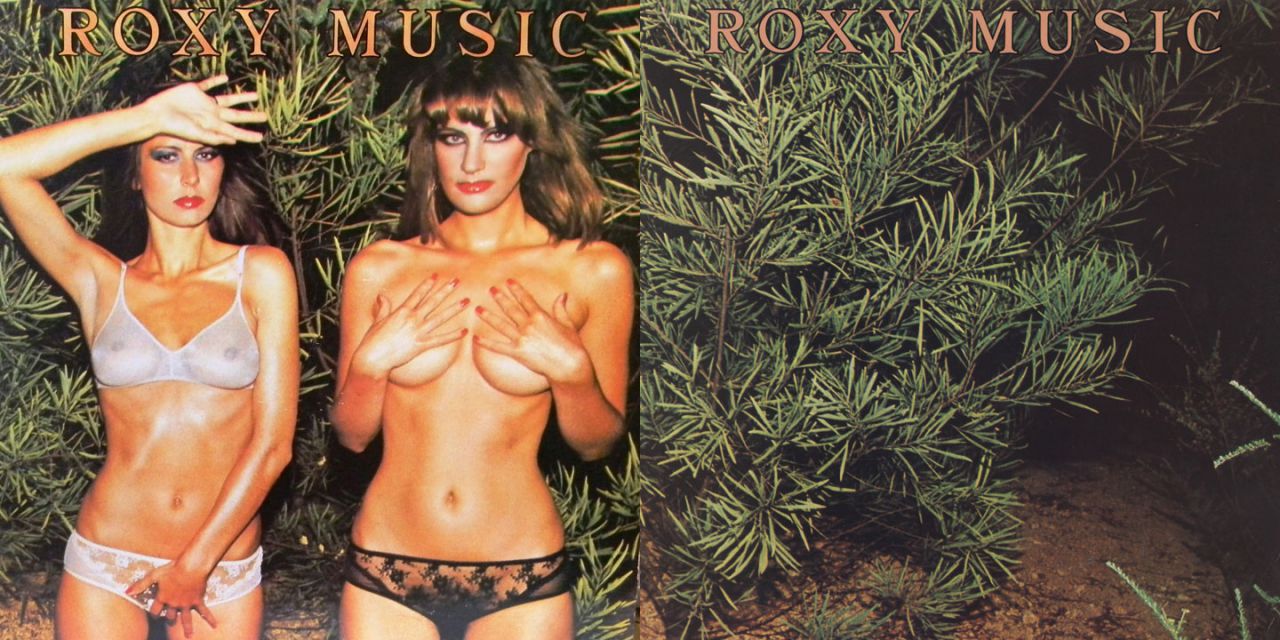
Roxy Music’s endless parade of 70s cover models, advertising the jet-set loucheness which let Bryan Ferry go out with one of them, Jerry Hall, peaked with Country Life (1974). A transparent bra led to its models’ removal from the US sleeve.
The Black Crowes - Amorica
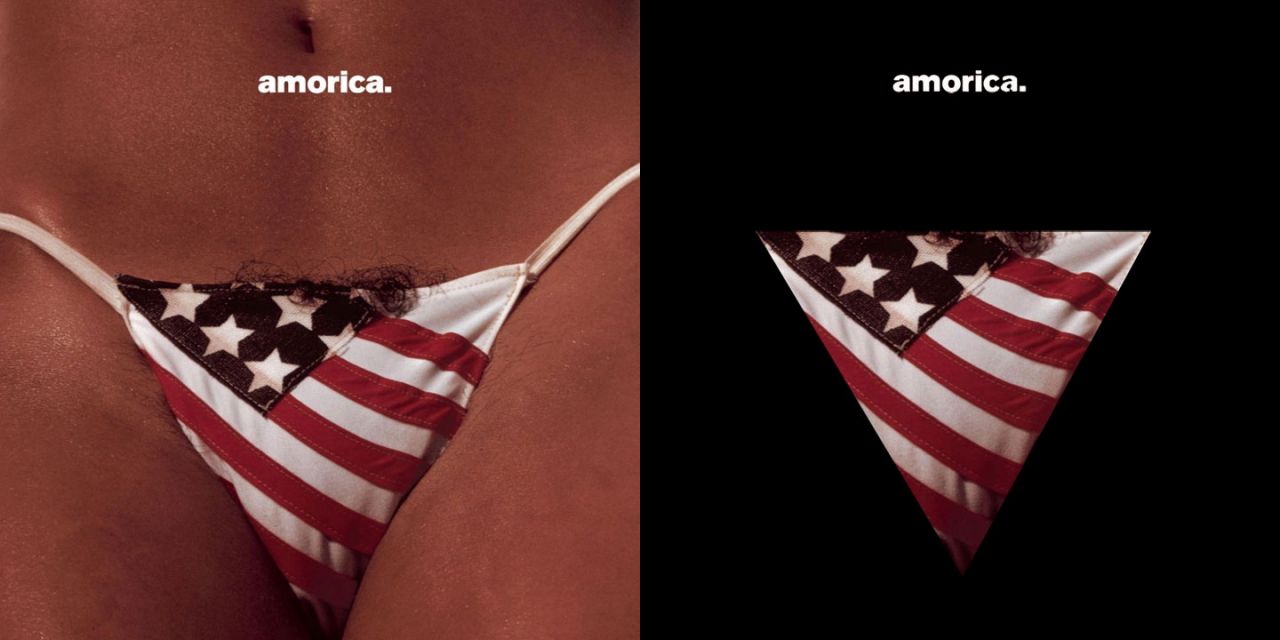
The Black Crowes’ penchant for 70s style led to a Hustler photo of a woman’s Stars-and-Stripes-bikinied crotch on Amorica (1994), her pubes overflowing decorously. They were snipped for some repressings; in others the beflagged bikini floated in a black background, like a patriotic hanky.
Scorpions - Virgin Killer
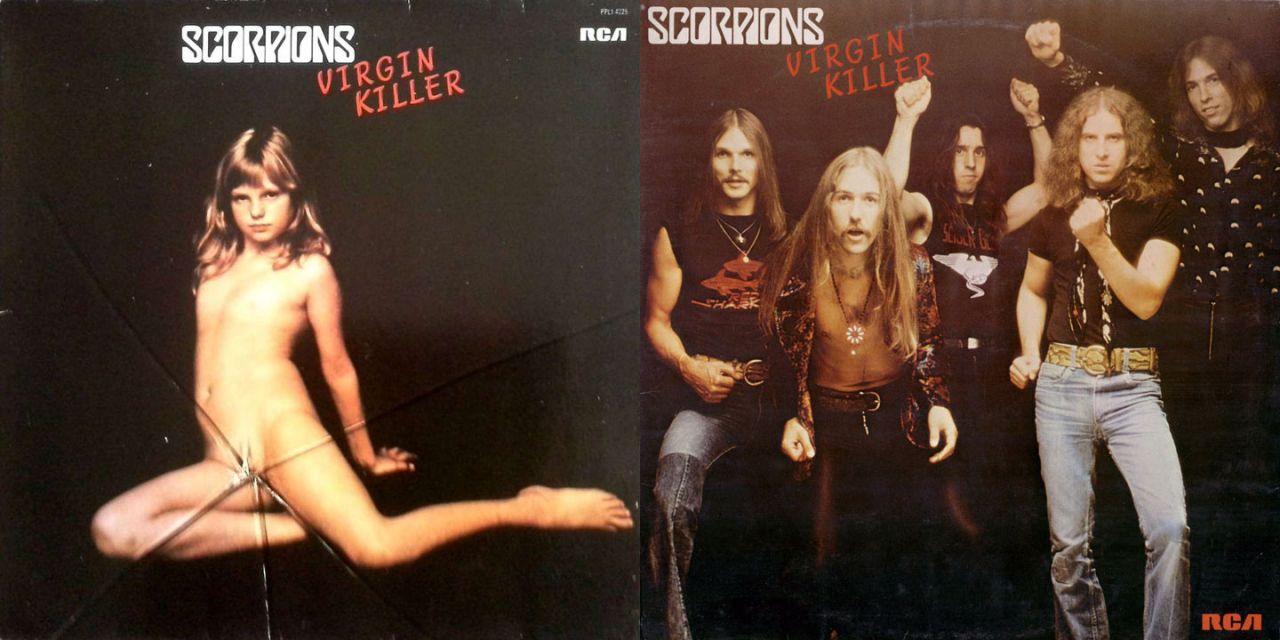
You have to wonder what was going through the minds of RCA's marketing executives as they brainstormed the cover for The Scorpions’ Virgin Killer. The title song’s lyric referred to time’s effect on innocence. The sleeve showed a naked 10-year-old girl, her back arched like a model, with her genitals mercifully hidden by broken glass.
It’s the pose, more than the nudity, that puts it beyond the pale. The Scorpions’ had a decade-long ethic of going “over the edge” with sleeve art, singer Klaus Meine later admitted. Virgin Killer, though, was something else. “Today when you think of child pornography on the net,” he said in 2010, “you would never do something like that…the label was pushing the idea because they wanted to get the controversy to help the album sale, and you cannot get better promotion than that.”
The sleeve was rapidly replaced by a band pic in most countries, the UK included, and the original maintains the power to shock. When Japanese "singing synthesizer" Hatsune Kaiden released her Noisy Killer album in 2015, the cover was spoofed.
Blind Faith - Blind Faith
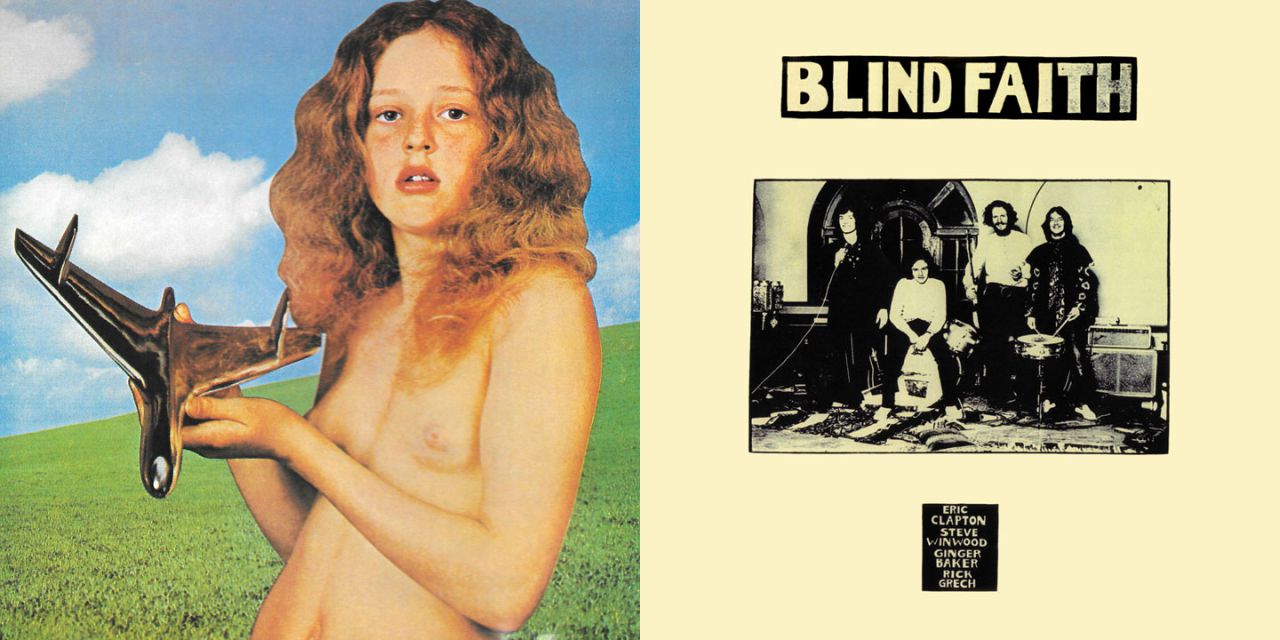
The 60s album which sits most uncomfortably in the racks today is Blind Faith’s 1969 self-titled debut, with its 11-year-old girl on the point of pubescence, naked from the waist up and flying a model spaceship, with England’s rustic green behind her. “The spaceship would be the fruit of the tree of knowledge,” its photographer and designer Bob Seidemann, a friend of Eric Clapton, recalled of his vision, “and the girl, the fruit of the tree of life.”
The age of the girl exercised him greatly, though not in the way it would today. “If she was too old, it would be cheesecake,” he explained, “too young and it would be nothing. The beginning of the transition from girl to woman, that’s what I was after.”
Seidemann chose the 11-year-old over his initial interest in her 14-year-old sister precisely because of her just-forming breasts. As with the naked children on the sleeve of Zep’s Houses of the Holy in 1973, the period’s belief in natural childhood innocence, expressed also in late 60s psychedelia’s Lewis Carroll acid whimsy, is now looked at through modern eyes obsessed with paedophile effect.
The USA joined several countries in going for a safe black-and-white shot of Clapton and co. for Blind Faith’s release there, while Houses of the Holy obscured its children’s genitals in some later pressings, as would happen two decades later to Nirvana’s Nevermind baby, showing the times weren’t so very different.
Jimi Hendrix Experience - Electric Ladyland

Rock was responding to a counter-culture further out than such staid showbiz values by the time Hendrix made Electric Ladyland in 1968. When its intended cover photo wasn’t ready in time, the title was taken literally, and Soho strippers were corralled from their lunchtime trade to nakedly adorn the gatefold sleeve.
Two York record shops banned it, and the Gramophone Retailers’ Committee protested, secretary Christopher Foss telling the Sunday Mirror: “This type of album sleeve is almost certain to reduce the sale of records.” Actually, the paper reported, Electric Ladyland sold 35,000 in its first four days. The US still went with Hendrix’s preferred cover shot of his fiery face.
The Beatles - Yesterday And Today
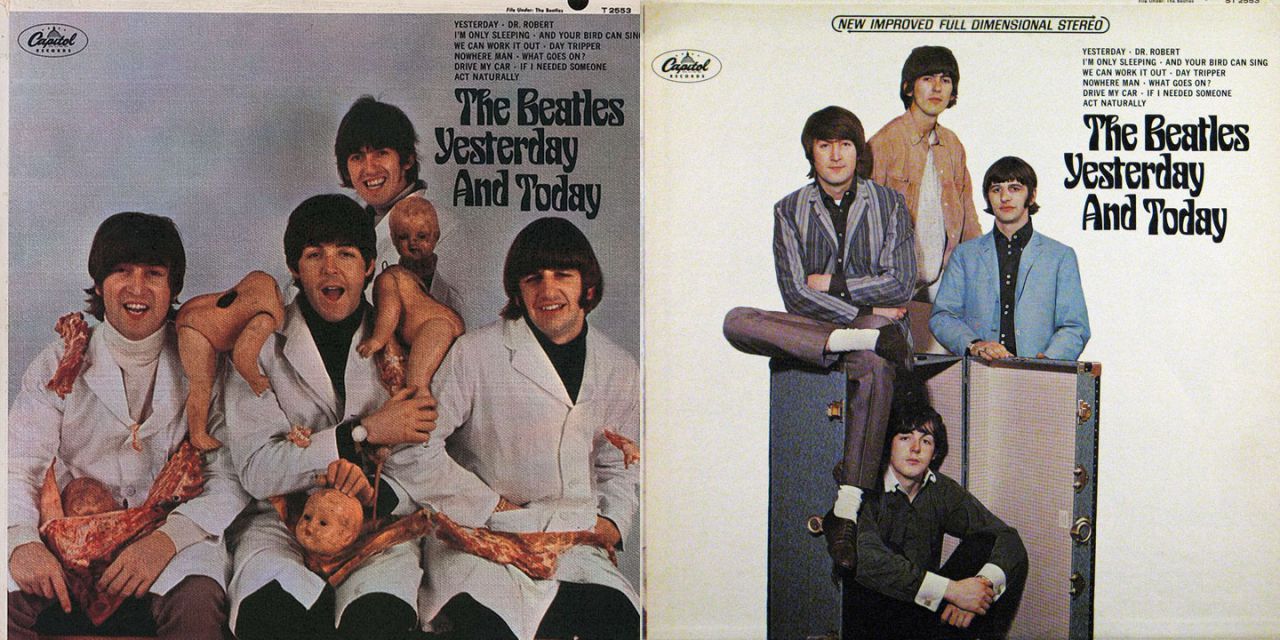
After a public outcry over the so-called “butcher” cover – even for a band as progressive as the loveable mop-tops, this was clearly a step too far – the record company recalled copies of the record sleeve and reissued it with new and innocent artwork, the so-called ''trunk cover''.
Confusingly for collectors, the original release is available in three variants. 'First state' copies feature the original sleeve as it was first pressed, while 'second state' sleeves feature the replacement artwork glued over the top of the original. 'Third state' sleeves have this second sleeve carefully removed, to reveal the original's meaty innards once more. Today, the original sleeve is widely available in pirated form.
XTC - Skylarking

XTC’s 1986 album Skylarking was reissued in 2010 with the cover nature, and Andy Partridge, intended: close-up photos, on the front and back, of flower-entwined female and male pubes. “I found that it nicely summarised…the feeling of the album,” Partridge explained.
Back in 1986, XTC found record shops unwelcoming places for such a bush-heavy album, going “all coy” when shown a mock-up, Partridge recalled, and saying it wouldn’t be stocked. A more bland scene of a flute-playing couple replaced it then. “We’re sure that folks won’t be so prudish in this, the 21st century,” Partridge hoped in 2010.
Lynyrd Skynyrd - Street Survivors
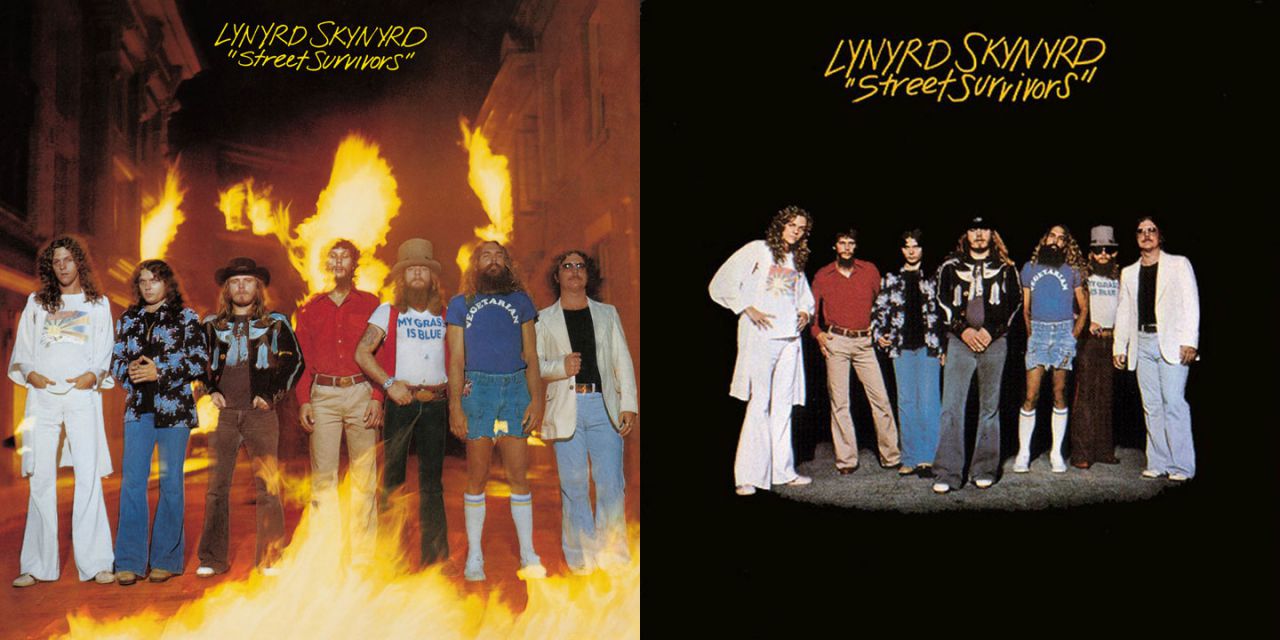
The original cover artwork for Street Survivors featured a photograph of the band engulfed in flames. Three days after the album was released, in what has to be the most unfortunately-timed album release of all time, three of the band were killed when their plane crashed en-route to Baton Rouge, Louisiana.
The crash killed three band members – singer Ronnie Van Zant, guitarist Steve Gaines, and Gaines' older sister, backing singer Cassie – as well as the group's assistant road-manager, and the plane's pilot and co-pilot.
Out of respect for the deceased (and at the request of Steve Gaines' widow, Teresa), MCA Records pulled the original cover and replaced it with an image of the band set against a sombre black background. 30 years later, when the deluxe CD version of Street Survivors was released, the original "flames" were restored.
Alice Cooper - Love It To Death
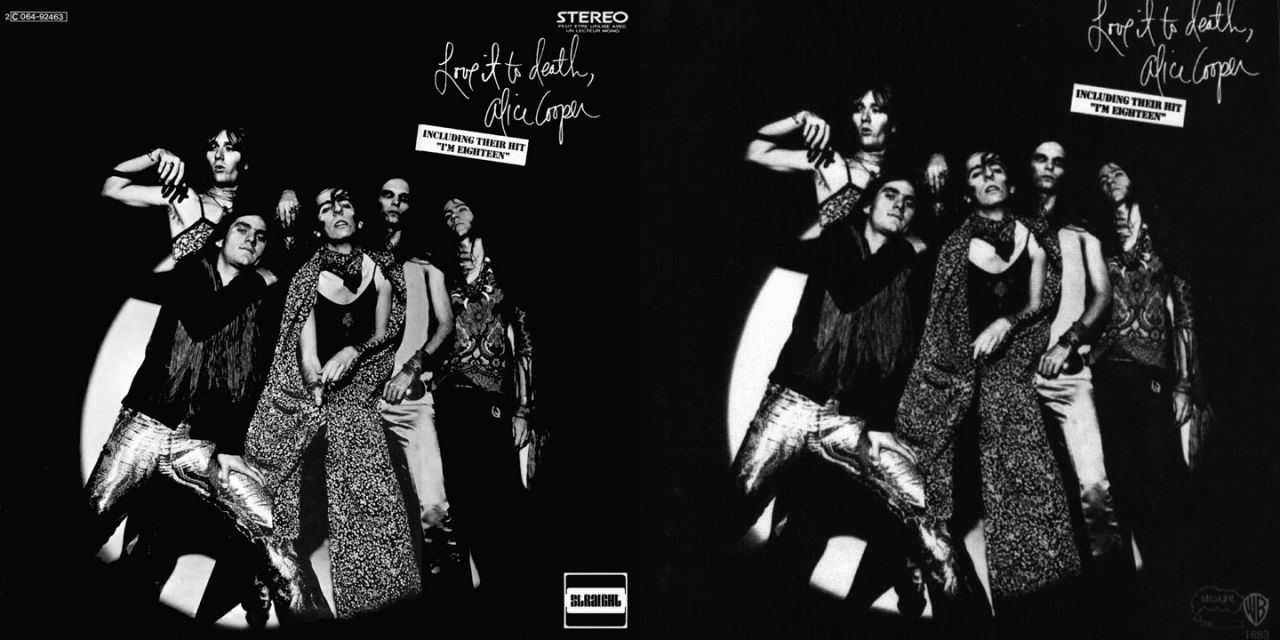
The first pressing of Love It To Death featured a cover image of the band with Alice holding an extended thumb out at crotch level. At first glance the thumb could be mistaken for a penis (this was the seventies, after all, when penises were everywhere). "I like to do things like that," said Alice, mischievously.
Warners soon realised their error and adjusted the artwork, lowering the picture of the band and hiding the offending protrusion with a plain white band. On later pressings, the thumb was airbrushed out.
Great White – Hooked

The sleeve for Great White's fifth album Hooked was photographed by fashion photographer John Scarpati, who also worked with Rush, Warrant, Poison, Stryper, L.A. Guns, Magnum and more. The cover, which featured a nude female model being hoisted from the sea on a large hook, was judged too risque by the label and subsequently replaced by Rush art director Hugh Syme.
Syme's alternative cover gently lowered the nice lady into the sea, submerging her offending parts, so that only her head and arms remained above water.
Pantera - Far Beyond Driven

The response to the PMRC in rock’s embattled underground was to go more extreme, even if the results were often short-lived, like the industrial drill-bit entering an arsehole (quickly changed to a skull) in Pantera’s Far Beyond Driven.
As is often the case, after the prevailing winds of taste have changed direction, Rhino were able to use the original original artwork when repressing the album in 2014.
Janes Addiction - Nothing's Shocking
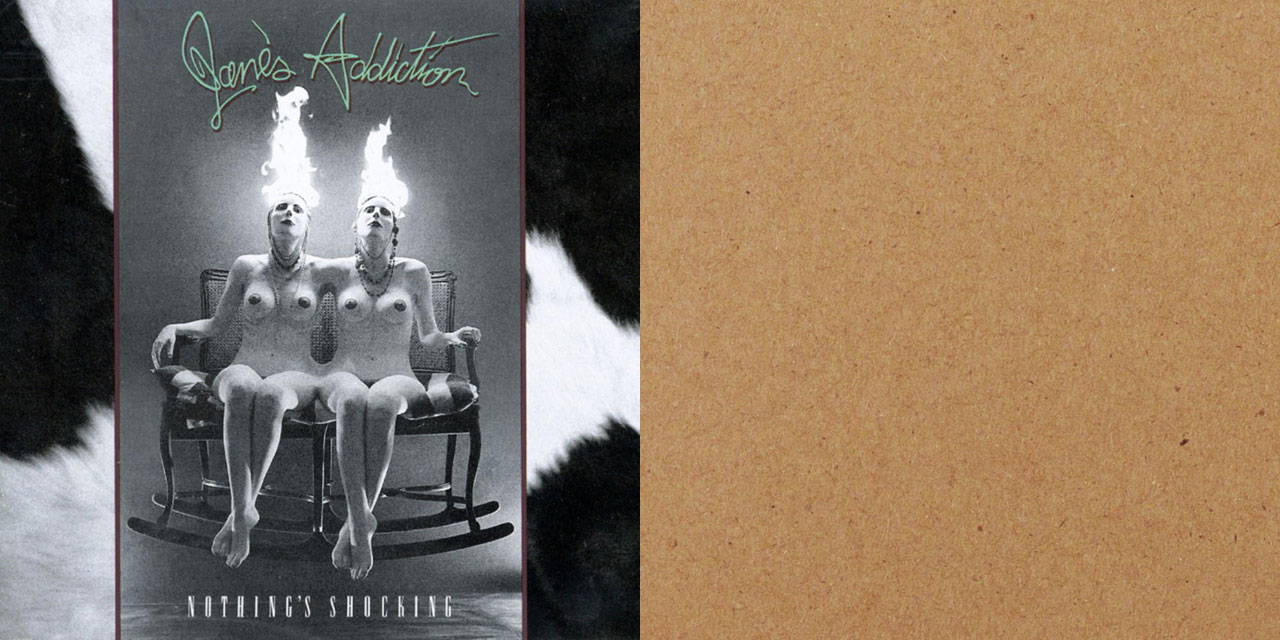
Walmart and K-Mart stores have usually exercised a Taliban-like refusal to stock anything remotely offensive, and in 1998 Jane’s Addiction’s Nothing’s Shocking disproved its title when its cover, showing conjoined, nude women with flaming heads, had to be sold in brown bags. "The idea came from a dream I had," Perry Farrell recalled. Elsewhere, first pressings hid the fiery twins behind a ribbed black plastic sleeve.
Tool – Undertow

A rare example of self-censorship, as Tool took the lead on their 1991 album Undertow. The band released a version showing just the barcode, with the preferred, nudity-heavy booklet available by post.
“We made the censored version for those kids who don’t have skate shops or cool record shops in their town,” bassist Paul D’Amour explained of their Walmart-appeasing decision. “Besides, we’d miss out on all that money…”
The Mama's And The Papa's - If You Can Believe Your Eyes And Ears
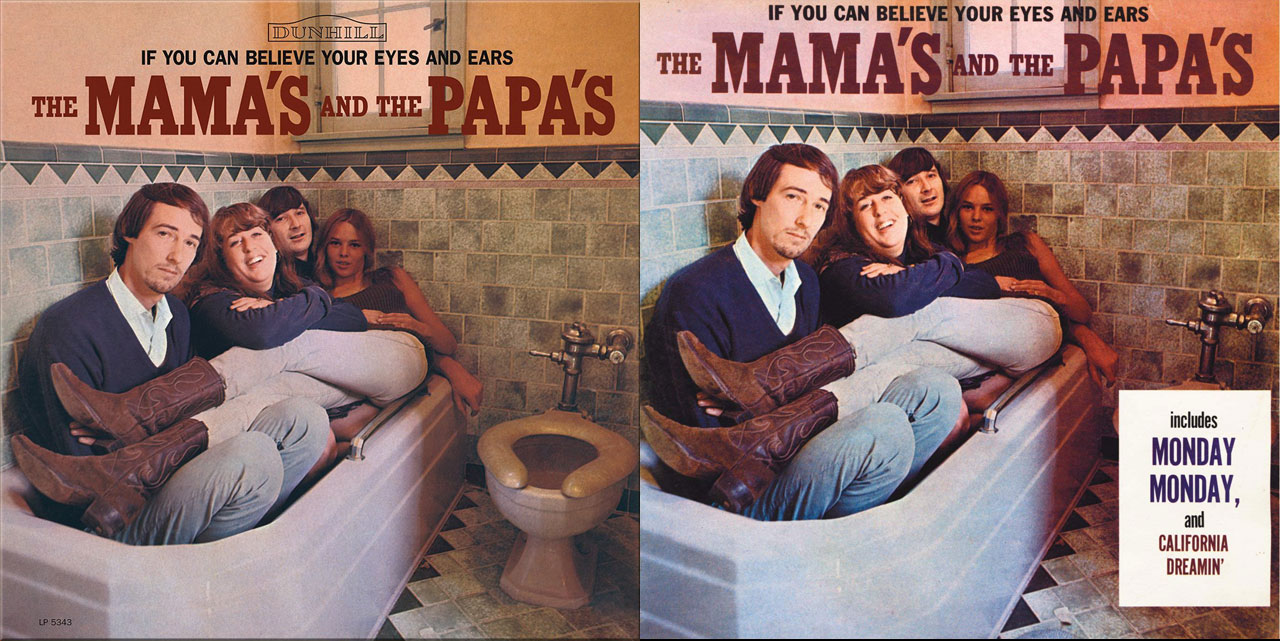
More evidence, if were ever needed, of our moral leaders' problem with toilets in the late 1960s. At least this one was clean, unlike The Stones' rather grubby unit (see above).
The original cover featured Mama Cass & Co. having innocent fun in a bathtub, with a privy in the corner of the room. The cover was pulled from stores after this was declared indecent (we know, go figure), and an alternative was issued in which the offending lavatory was hidden by the names of the band's hits. This was eventually followed by a third version, where a black border removed any hint that the picture had ever contained a dunny, as they say in Australia.
Nick Hasted writes about film, music, books and comics for Classic Rock, The Independent, Uncut, Jazzwise and The Arts Desk. He has published three books: The Dark Story of Eminem (2002), You Really Got Me: The Story of The Kinks (2011), and Jack White: How He Built An Empire From The Blues (2016).

